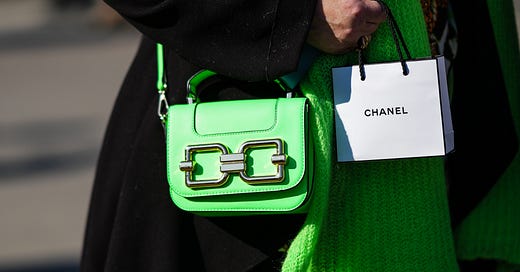Fashion Brands Are Raising Prices and It’s Working For Them
Yes, everything is more expensive. Even your clothing.


Two very different brands implemented similar strategies in recent months, and it appears to be working – at least for them. Both Dr. Martens, the famed boot maker, and ultra luxury brand Chanel, decided to raise their prices in 2021 and it made profits soar. According to Business of Fashion, pretax profits for Dr. Martens rose 43% to $270 million in the first three months of 2022. Similarly, Chanel reported a 22% revenue increase reaching profits of $15.6 billion. LVMH also announced that Louis Vuitton is raising prices, but the revenue payoff hasn’t been reported.
While Dr. Martens claims the price hike is to keep up with inflation, for Chanel, raising the prices (almost $1,000 in some instances) is a matter of making the brand more exclusive. Either way, customers are still buying in. The question is, does this have larger implications on fashion, and will other brands follow suit? Well, maybe. The US Bureau of Labor Statistics report on the consumer price index reported that clothing prices are about 6.8% higher this year. Between supply chain bottlenecks, material cost and a generally volatile market, it doesn’t appear that this trend is slowing down at all.
While it may not be publicly popular (who wants to spend more on the brand they already love?) it might be one of the more efficient options for most. Another Business of Fashion story suggested brands could switch materials or larger quantity orders, as both come with risks of overproduction and poor quality. A different choice might be nearshoring production. In other words, brands moving their manufacturing closer to where their business is, in order to reduce shipping costs. This is something that the proposed FABRIC Act would attempt to address. The bill, if passed, would give brands a 30% tax credit to nearshore their business back to the United States.
So if you feel like summer shopping is pushing the limits of your budget, then all of the above is why. But before you turn your eye toward fast fashion – those brands are not immune to inflation but they have quantities and low wage labor that keeps their prices competitive – consider how resale has fared in this economy. While some shoppers may be OK with spending the extra money on a piece they’re going to love, the majority are still looking for a bargain. In the 2022 ThredUP resale report, most people surveyed said their biggest motivator for shopping second hand is price. With rising costs all around, that makes as much sense as it ever has.
Check this out next:
The Interesting Reason Why Resale Fashion Is Growing
Unpacking My Love-Hate Relationship With Dresses
********************************************************************
Thank you for reading!!
This Stuff is a newsletter by me! fashion journalist, Alyssa Hardy. Three times a week, I unpack the ways our clothes impact the world through news, essays, interviews and more. Subscribe for free here and follow me on Instagram, Facebook and Twitter.
You can preorder my book "Worn Out: How Our Clothes Cover Up Fashion's Sins" here.




